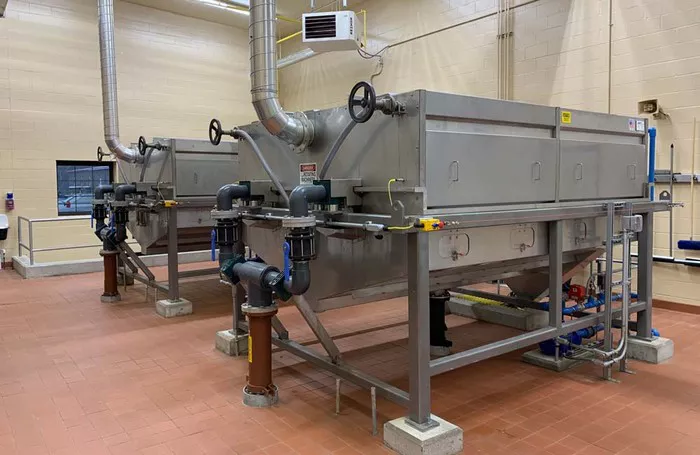The Town of Milford marked a major infrastructure milestone on Wednesday, breaking ground on a comprehensive upgrade of its Wastewater Treatment Facility — a project designed to modernize aging systems and meet new federal environmental standards.
Originally built between 1980 and 1981 and operational since 1982, the facility has continuously served the community for more than four decades. Its initial construction was funded under the federal Clean Water Act, with $6.7 million allocated for the treatment plant and an additional $7.8 million for nearly 78,000 feet of sanitary sewer lines.
Now, over 40 years later, the facility is undergoing its most significant overhaul yet.
The upgrades will bring the facility into compliance with the U.S. Environmental Protection Agency’s updated National Pollutant Discharge Elimination System (NPDES) permit, issued in November 2020. The new regulations require stricter limits on phosphorus and metal discharges, aiming to protect the Souhegan River — a critical tributary of the Merrimack River and an essential drinking water source for Milford and surrounding communities.
“We’re proud to be taking this next step to ensure our wastewater infrastructure keeps pace with the needs of the environment and the community,” said Jim Pouliot, Milford’s Water Utilities Director. “This project represents a forward-looking investment in sustainability, resilience, and public health.”
Planned improvements include the integration of advanced treatment processes and the modernization of key components such as sludge storage, odor control, and the secondary treatment aeration system. Electrical systems and overall process operations will also be upgraded. Officials say these changes will improve energy efficiency, operational reliability, and staff safety.
The project is informed by a multi-year study, partially funded by over $600,000 in American Rescue Plan Act grants. This study included pilot testing of advanced technologies and site visits to similar facilities across New England.
Hoyle, Tanner & Associates, Inc. is serving as the design engineer, while RH White will lead construction as the general contractor.
To finance the project, the Town of Milford has secured 15% loan forgiveness and plans to apply for an additional 20% in state aid upon completion. The Town of Wilton — which uses Milford’s treatment services — will contribute approximately 15% of the cost, after accounting for grants and loan forgiveness. The remainder will be financed through low-interest loans from the New Hampshire Department of Environmental Services.
“Cost-sharing between state and federal sources, neighboring towns, and local ratepayers is essential to tackling a project of this scale,” said Dale White, Chair of the Milford Water & Sewer Commission. “Delaying these improvements would only increase the financial burden down the road.”
Once completed, the upgraded facility is expected to serve the community for the next two decades, supporting both residential needs and the area’s commercial and industrial sectors that rely on reliable wastewater treatment.
Related topics:

